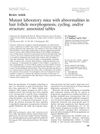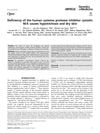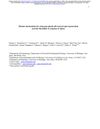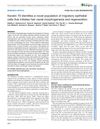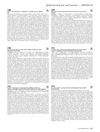A Null Mutation in the Cystatin M/E Gene of Ichq Mice Causes Juvenile Lethality and Defects in Epidermal Cornification
October 2002
in “
Human molecular genetics online/Human molecular genetics
”
cystatin M/E Cst6 gene epidermal cornification hyperplastic epidermis hyperkeratotic epidermis abnormal hair follicles stratum granulosum infundibulum of hair follicles type 2 harlequin ichthyosis cystatin M/E Cst6 gene cornification hyperplastic skin hyperkeratotic skin abnormal hair follicles stratum granulosum hair follicle infundibulum harlequin ichthyosis
TLDR A gene mutation in mice causes skin defects and early death.
The study identified a nonsense mutation in the Cst6 gene of BALB/cJ-ichq/+ mice, which prevented the synthesis of functional cystatin M/E protein. Homozygous mice for this mutation exhibited a hyperplastic, hyperkeratotic epidermis, abnormal hair follicles, and died between 5 and 12 days of age. Immunohistochemistry confirmed the absence of cystatin M/E protein in these mice. In wild-type mice, cystatin M/E was present in the stratum granulosum and the infundibulum of hair follicles, correlating with the observed tissue abnormalities in mutant mice. The findings suggested that cystatin M/E is essential for viability and proper formation of cornified layers in the epidermis and hair follicles, and the ichq mouse mutation could model human type 2 harlequin ichthyosis.
